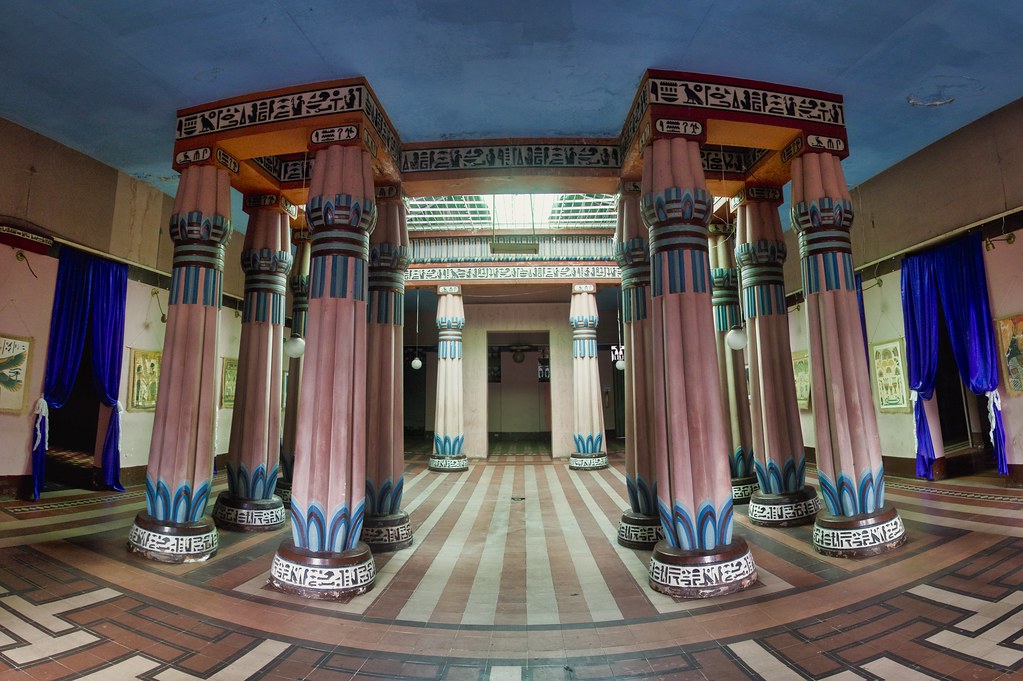In the barrio Prado, stands an architectural marvel that transports visitors to the land of pyramids and pharaohs: the Palacio Egipcio (Egyptian Palace). This extraordinary edifice, a testament to the adventurous spirit and scholarly pursuits of its creator, Don Fernando Estrada Estrada, has captivated the imagination of locals and travelers alike for over a century.
Estrada’s journey to becoming the architect of this remarkable structure began in the humble town of Aguadas, Caldas. Driven by an insatiable thirst for knowledge, he embarked on a voyage that would take him across continents and immerse him in diverse cultures. His travels led him to Panama, Puerto Rico, and eventually to the heart of Europe, where he delved into the realms of engineering, optics, astronomy, and history.
In 1912, Estrada’s path led him to Egypt, a land that would profoundly shape his life and artistic vision. Captivated by the grandeur of the pyramids, the enigmatic hieroglyphs, and the allure of Pharaonic sculptures, he embarked on an expedition to the ancient cities of Karnak, Luxor, and Dendera. These sacred sites would serve as inspiration for his own architectural masterpiece.
Upon his return to Colombia, Estrada settled in Medellín, where he established a thriving optometry practice. However, his passion for architecture remained undimmed. In 1928, he commenced construction on his dream project: the Egyptian Palace.
The Palacio Egipcio, meticulously designed with inspiration drawn from the temples of Karnak, Luxor, and Dendera, was a labor of love that spanned 17 years. Each detail, from the imposing papyrus-shaped columns to the vibrant murals adorning the staircases, reflected Estrada’s deep appreciation for Egyptian culture and his mastery of architectural techniques.
The Palacio Egipcio’s crowning glory was its astronomical observatory, perched atop the tower, where Estrada would spend countless nights gazing at the celestial wonders that had long fascinated him. The palace became a sanctuary of knowledge and a testament to Estrada’s unwavering pursuit of his passions.
For four decades, the Palacio Egipcio served as the home of the Estrada family. Its walls echoed with laughter, stories, and a deep respect for history and culture. The bust of Queen Nefertiti, a prized possession acquired during Estrada’s travels, held a special place in the family’s hearts.
As the years passed, the changing landscape of Medellín inevitably touched the Palacio Egipcio. In 1991, the palace was declared a property of public interest, and in subsequent years, it passed through the hands of various owners, serving as a school, carpentry workshop, restaurant, design agency, and even a shelter for the homeless.
Despite the passage of time and the changing tides of the city, the Egyptian Palace stands as a poignant reminder of a bygone era, a testament to the adventurous spirit and scholarly pursuits of Don Fernando Estrada Estrada. Its weathered walls bear silent witness to a life dedicated to exploration, learning, and the preservation of cultural heritage.
Today, the Palacio Egipcio under the stewardship of the Visión Planeta Azul foundation, continues to inspire and captivate. While its physical structure bears the marks of time, its legacy endures, a symbol of the enduring power of human curiosity, creativity, and the pursuit of knowledge.

